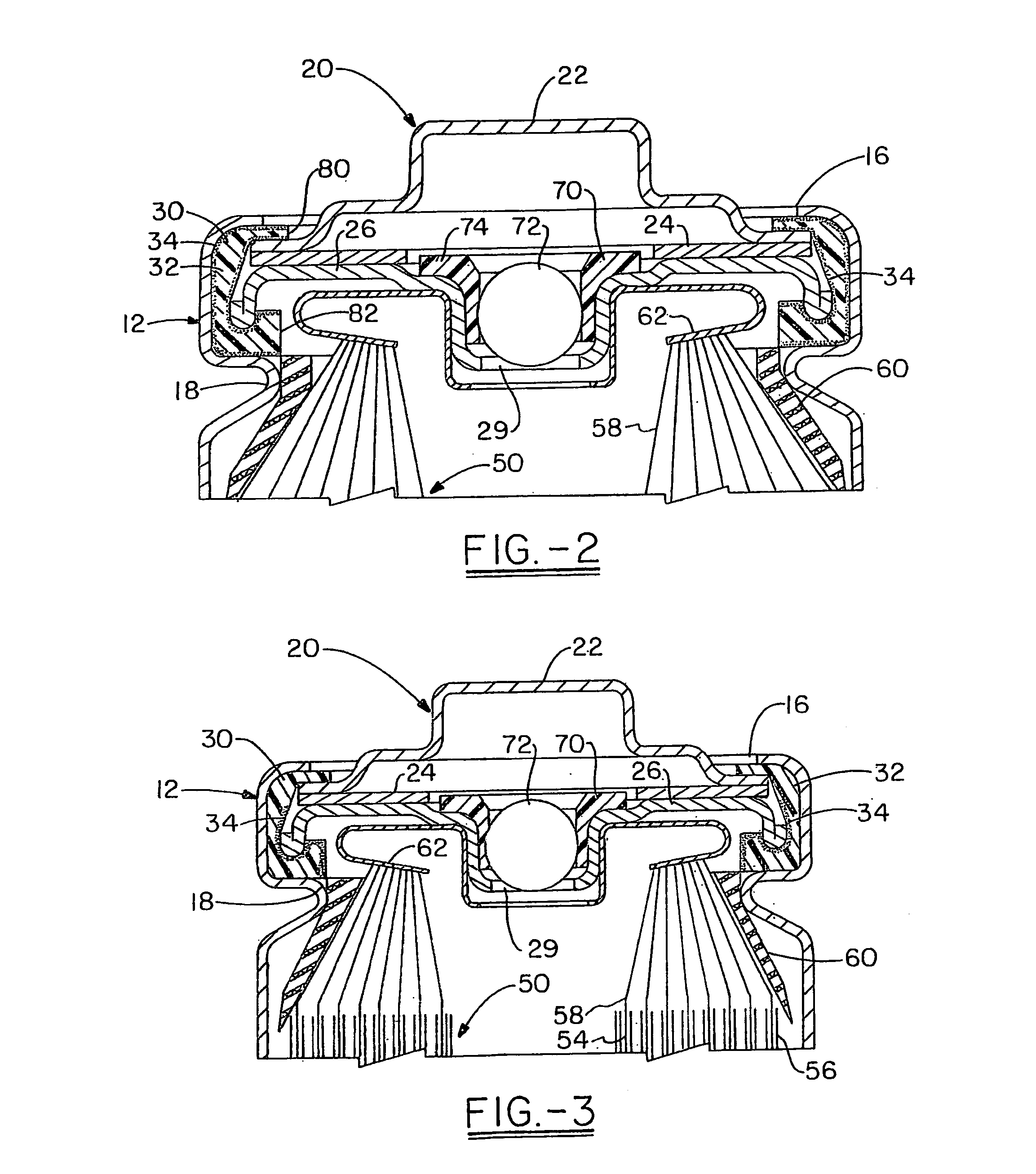Vapor Transmission Resistant Seal Members for Nonaqueous Electrochemical Cells
a technology of nonaqueous electrochemical cells and seal members, which is applied in the direction of non-aqueous electrolyte cells, cell components, sustainable manufacturing/processing, etc., can solve the problems of reducing the time that sufficient compression can be maintained, the thermoplastic materials and seal designs suitable for nonaqueous cell seal members are more limited than for aqueous cell seal members, and achieve low salting, leakage, and vapor transmission
- Summary
- Abstract
- Description
- Claims
- Application Information
AI Technical Summary
Benefits of technology
Problems solved by technology
Method used
Image
Examples
example
[0077]In order to illustrate the industrial applicability of the present invention, vapor barrier properties of various materials were tested in relation to an all-ether based LiI electrolyte solution that can be utilized in one embodiment of the invention. To illustrate the vapor barrier properties of one commonly used material for seal members, a thermoplastic polypropylene film having a thickness of 76.2 micrometers (3 mils) was utilized as a control. An aluminum film was used as an example of a barrier layer, specifically a metallized coating layer and had a thickness of 20.32 micrometers (0.8 mil).
[0078]Wheaton 10 ml serum glass vials, each having an approximately 14.5 mm opening in internal diameter, each containing 8-ml of 0.752 molal LiI electrolyte in a 1,3-dioxolane (DIOX) and 1,2 dimethoxyethane (DME) solvent blend were used as the test vehicle for determining the resistance of the selected material to vapor transmission. The ratio of DIOX to DME for the solvent blend was...
PUM
| Property | Measurement | Unit |
|---|---|---|
| thickness | aaaaa | aaaaa |
| thickness | aaaaa | aaaaa |
| thickness | aaaaa | aaaaa |
Abstract
Description
Claims
Application Information
 Login to View More
Login to View More - R&D
- Intellectual Property
- Life Sciences
- Materials
- Tech Scout
- Unparalleled Data Quality
- Higher Quality Content
- 60% Fewer Hallucinations
Browse by: Latest US Patents, China's latest patents, Technical Efficacy Thesaurus, Application Domain, Technology Topic, Popular Technical Reports.
© 2025 PatSnap. All rights reserved.Legal|Privacy policy|Modern Slavery Act Transparency Statement|Sitemap|About US| Contact US: help@patsnap.com



